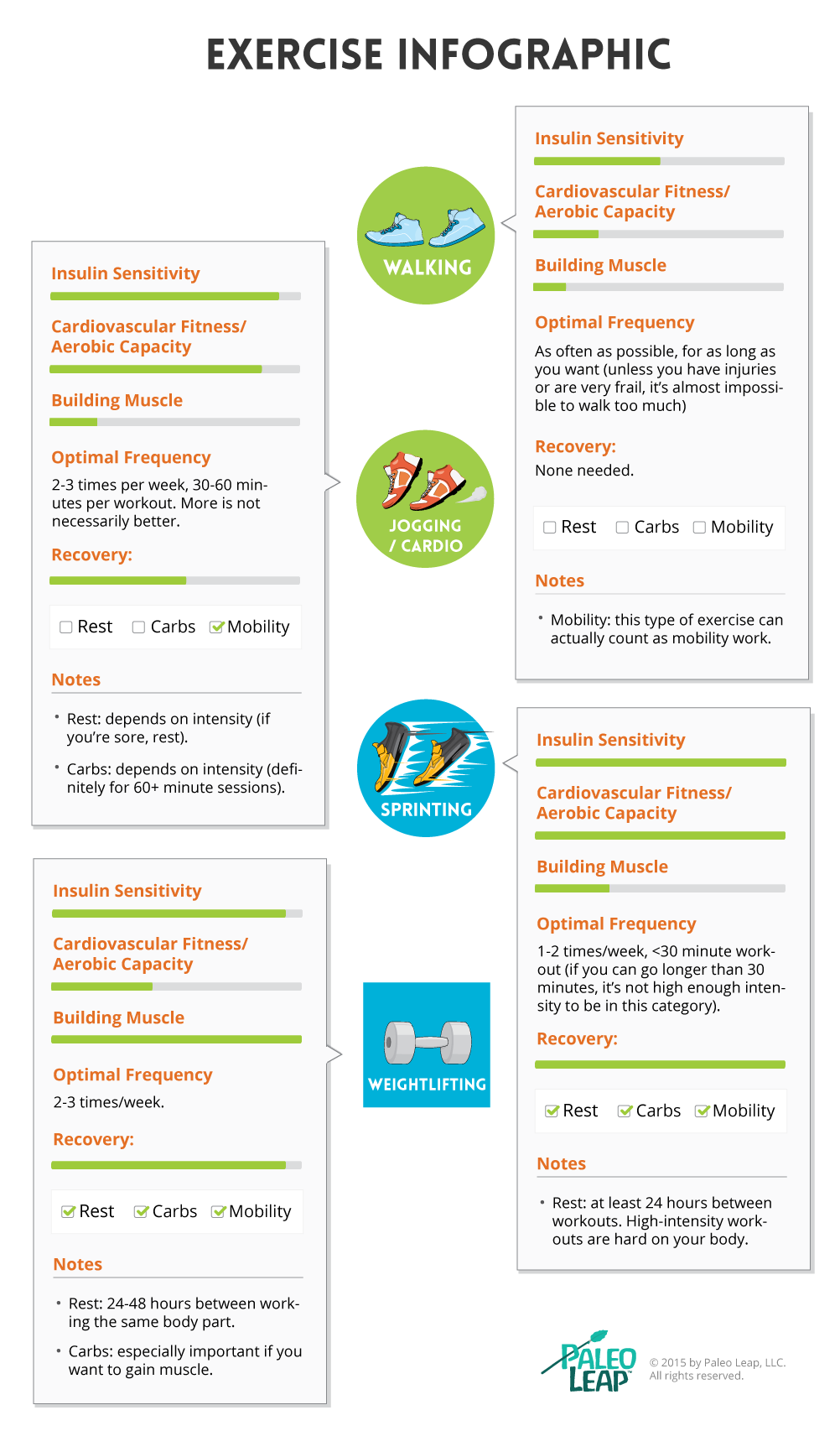
There's a time and a place for the nitty-gritty of exercise science, but there's also a time and a place to keep it short, keep it simple, and then get off the computer and into the gym.
So if you're wondering where to start with Paleo-style workouts but you're not quite up to wading through all the research, here's a very basic guide to four different types of exercise:
- Very low intensity: walking (or very slow biking, gentle swimming, easy yoga/stretching, gardening or light outdoor work).
- Cardio conditioning: jogging (or vigorous biking, hard swimming, skiing, or other forms of cardio).
- Sprinting or other interval workouts (see here for more details).
- Weightlifting
Click the icons below to see basic information about each type, including health highlights, how much to do, and how often. Mix and match two or more types to get a basic Paleo workout plan that you can tweak to your specific needs as you get used to it.
Infographic Key:
Green icons:
Indicates aerobic exercises (lower intensity, longer time)
Blue icons:
Indicates anaerobic exercises (higher intensity, shorter time)
Circular icons:
Indicates conditioning exercises.
Square icon:
Indicates strength-building exercises.
Can't view the infographic after 20 seconds? Click here for an alternate version.
Sources
Insulin sensitivity/metabolic health: here is the free full-text of an exhaustive review of insulin, insulin resistance/sensitivity, and the effects of different modalities of exercise on it. Aerobic exercise is the classic, but strength training is just as good (1, 2, 3) and high-intensity exercise may be even better (1, 2, 3, 4). Aerobic and resistance exercises compound each other’s’ benefits. Walking also helps, if it’s done in sessions of 30 minute or more.
Benefits appear to keep increasing up to at least 2500 calories/week of exercise (if you work out 6 days/week, that’s 416 calories per workout, which is 30-45 minutes of jogging or around an hour of weightlifting per workout – totally doable)
Cardiovascular fitness/aerobic capacity: again, aerobic exercise is the standard, but high-intensity exercise is just as good or better (1, 2, 3). Resistance training also helps, but a combination of aerobic and resistance is even better (1).
Muscle-building: aerobic exercise doesn’t do much to build muscle in young, non-sedentary people, but may be helpful for older or sedentary people (1, 2). If you aren’t already weak, resistance training will be a better bet for gaining muscle mass.
Optimal frequency: Here’s some further reading on optimal frequency/length of workouts.





Leave a Reply